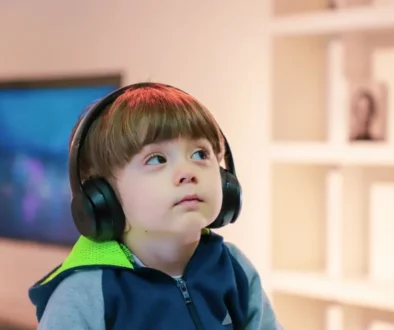Understanding the Different Autism Spectrum Levels
It’s believed that 1 in 44 kids is on the autism spectrum. Autism Spectrum Disorder (ASD) is divided into 3 levels in the Diagnostic and Statistical Manual 5th Edition (DSM-5) dependent upon how severe a child’s symptoms are. The most severe level is level 3, while levels 2 and 1 are less severe.
Read on to learn more about the levels of Autism Spectrum Disorder.
What Is Autism?
Autism, now widely referred to as Autism Spectrum Disorder, can affect how a person acts, learns, and expresses themselves. Though it can be diagnosed at any age, it’s generally viewed as a “developmental disorder” because symptoms typically appear very early on (usually within the first two years of life).
Each individual diagnosed with ASD is different.
What Are the Autism Signs?
Features of ASD typically begin to manifest early on. Many of those diagnosed are very young. Some of the autism signs include:
- Avoiding eye contact
- Not returning a smile
- Repeating the same phrases
- Not talking as much as other kids
- Not responding to their name
In older children, the signs of autism are a little different. They can include:
- Not understanding what others think or feel
- Difficulty communicating how they feel
- Difficulty making friends
- Getting overly emotional when asked to do something
While these things may be signs of autism, ASD isn’t the only reason that a child might behave this way. Only a professional well-versed in autism signs is able to accurately assess someone.
Levels of the Autism Spectrum
Here is a detailed summary of levels 1 through 3 of ASD. While many people diagnosed with autism may share symptoms, the degree to which they experience them varies.
By dividing Autism Spectrum Disorder into three levels, it helps providers prescribe the most effective therapies for each patient’s unique needs. Therapies help people with ASD make the most of their strengths and improve in areas in which they may be deficient.
Level 1 – Requires Support
Level 1 is the mildest type of ASD, and is sometimes referred to as high-functioning autism. Children at level 1 typically have a more difficult time communicating with other people. They may also have difficulty interpreting social cues and body language.
In some cases, people at level 1 have trouble moving from one task to another or trying something altogether new. They can sometimes have trouble with organization and planning skills, too, making it more difficult for them to accomplish things.
Level 2 – Requires Substantial Support
Individuals who have level 2 ASD will have more obvious issues with verbal and interpersonal communication. They also find it hard to change tasks or move on from one thing to the next.
Children diagnosed with level 2 usually perform repetitive behaviors that can cause problems with functioning in certain situations. Sometimes they pace back and forth or repeat words or phrases over and over again.
Often, those who are in the level 2 range speak in short, simple sentences and struggle with nonverbal communication.
Level 3 – Requires Very Substantial Support
This is the most severe form of Autism Spectrum Disorder. Children at level 3 often have similar problems as those at levels 1 and 2, but they’re much more severe. The problems communicating verbally and non-verbally can result in severe difficulty functioning, dealing with change, and/or interacting socially.
At level 3, people typically have trouble speaking clearly. They also seldom initiate interactions with others.
When (and if) they do, the interaction is usually awkward. At level 3 ASD, people usually only respond to very direct social approaches from others.
The Limitations of Autism Spectrum Disorder Levels
ASD levels allow providers to easily diagnose autism severity and identify the level of support someone needs. An autism diagnosis can be obtained either in person or through telemedicine.
The three-level system does have its issues, though. They don’t entirely include all of the symptoms and needs of everyone who is on the autism spectrum. The DSM-V, while very useful, doesn’t offer much by way of specifics regarding the support people with ASD needs.
One example of this is that people with ASD may function fine in one environment while needing significant support in another (such as school and home). Additionally, the level someone is first assigned can change as the person grows and develops. The symptoms they experience and behaviors they engage in can grow more or less severe as time goes on, resulting in a change in level.
Assigning someone a level goes a long way toward understanding the type of service or support someone needs. However, it doesn’t account for the unique details of their existence. Everyone is different, and the severity of their symptoms can vary widely from person to person.
Telemedicine and Autism Diagnosis
The recent pandemic has necessitated the rise in telemedicine for many patients and providers in Texas. Telemedicine has many great advantages over traditional in-person appointments, including convenience, privacy, speed, and cost.
More Convenient
The increased accessibility for all clients is one of the greatest strengths of telemedicine. Whether the client leads a busy life, has difficulty finding transportation, or lives far away, they can still get care.
You Can Save Money
Things like gas prices, child care, missed work, etc. are all associated with in-person appointments. They also cost you money. Telemedicine uses the internet connection you already have to bring your provider to you online, without the extraneous costs.
It’s Private
Telemedicine helps ensure the maximum level of privacy. As time goes on and people become increasingly connected, it can sometimes prove difficult to keep things private. With telemedicine, the only person who needs to know what you’re doing is your doctor.
Fewer Wait Times
Since the meeting is virtual, all aspects of your treatment are electronic and paperless. You can send paperwork and other documents immediately via email rather than mailing them or bringing them with you to your next appointment. Since things move faster in a virtual environment, more patients can be seen in a shorter amount of time.
Do You Know Someone With ASD?
When someone is diagnosed as being on the autism spectrum, they fall under one of three levels depending on how severe their symptoms are. Level 1 is the least severe, while level 3 is the most severe. The levels have their drawbacks, but all in all, they make it much easier to determine the type and amount of support a person with Autism Spectrum Disorder needs.
If you’d like to learn more about ASD or how telemedicine in Texas can help, contact us today.



